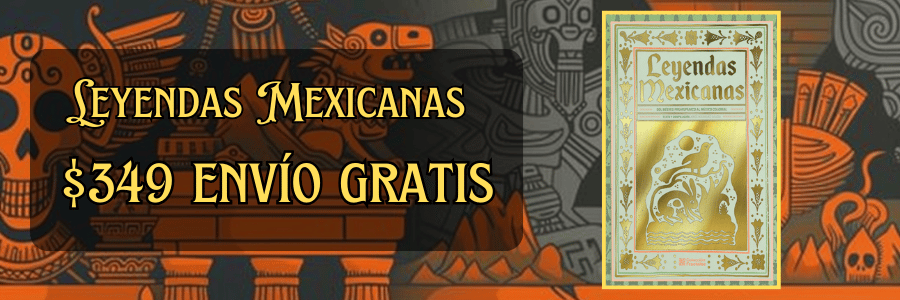Exploring the Sierra Tarahumara: Home of the Rarámuri People
The Sierra Tarahumara, located in Mexico's northern state of Chihuahua, is a rugged and breathtaking region that forms part of the larger Sierra Madre Occidental mountain range. Characterized by its deep canyons, steep cliffs, and rich biodiversity, the Sierra Tarahumara serves as the home of the Rarámuri people, an indigenous group whose culture, history, and traditional ways of life are intricately linked to this stunning environment. The region offers not only natural beauty but also a unique glimpse into the traditions, values, and sustainable practices of the Rarámuri, known for their remarkable endurance and running capabilities.
The name "Sierra Tarahumara" derives from the Rarámuri language, where "Tarahumara" translates roughly to "the people of the place where they are." The Rarámuri, also known as Tarahumara, are known for their athletic prowess in distance running, a tradition that has garnered admiration worldwide. However, their identity extends far beyond their physical abilities. The Rarámuri have cultivated a rich cultural heritage characterized by deep-rooted spiritual beliefs, vibrant art forms, and a profound relationship with their land.
The history of the Rarámuri people is one marked by resilience and adaptation. Over the centuries, they have navigated challenges posed by colonization, external economic pressures, and environmental changes. The Spanish colonial period had a significant impact on the Rarámuri, as missionaries sought to convert them to Christianity. Many Rarámuri blended their original beliefs with new religious practices, creating a unique syncretism that reflected their enduring spiritual connection to the land.
Today, the Rarámuri live in small, scattered communities throughout the Sierra Tarahumara, with many still residing in traditional caves, known as "cabas." These caves, often situated in cliffs or shielded by rock formations, provide natural shelter and are considered sacred spaces. The construction of their dwellings, which may also include wooden homes, often reflects a deep respectful interaction with the environment, highlighting the Rarámuri's commitment to sustainable living.
The Rarámuri economy is predominantly subsistence-based, relying on traditional agricultural practices, hunting, and gathering. Farming is typically done in small plots, where they cultivate crops such as corn, beans, and squash—staples that are integral to their diet. Maize, in particular, holds cultural significance, featuring prominently in Rarámuri rituals and festivities. The traditional planting and harvesting of these crops occur under the guidance of ancestral knowledge passed down through generations, demonstrating their respect for the land and the rhythms of nature.
One of the most celebrated aspects of Rarámuri culture is their tradition of long-distance running. The Rarámuri have a distinct approach to running that is tied to their spirituality and community. Their running style, characterized by sturdy sandals made from tire rubber, allows them to cover great distances, sometimes running for 50 miles a day through rugged terrain. Running is not merely a physical activity but a communal practice that strengthens social bonds and fosters a sense of identity. It is also an integral part of their ceremonies and celebrations, manifesting their relationship with nature and the cosmos.
The endurance of the Rarámuri athletes has attracted international attention, particularly through events like the Copper Canyon Ultra Marathon--an annual race that draws competitors from around the globe. These races celebrate not just athleticism but also the cultural significance of running within the Rarámuri community. Through these events, the challenges and triumphs faced by the Rarámuri are highlighted, bringing their culture to a broader audience while fostering mutual respect between indigenous traditions and contemporary athletics.
Despite the rich traditions and culture of the Rarámuri, the Sierra Tarahumara faces significant environmental and social challenges. Deforestation, land loss, climate change, and encroachment from commercial farming threaten the sustainable lifestyle of the Rarámuri people. The influx of external economic interests—including mining and logging operations—complicates their ability to maintain their cultural practices and access to natural resources. Moreover, neo-liberal economic policies have often marginalized indigenous voices and decisions regarding land use, leading to increased displacement and socioeconomic disparities.
In recent years, efforts have been made to protect the rights of the Rarámuri people and promote sustainable practices in the Sierra Tarahumara. Several NGOs and local initiatives focus on empowering indigenous communities, advocating for their land rights, culture, and sustainable development. These organizations engage in conservation, promoting ecotourism, and enhancing community resilience in the face of economic pressures. By integrating traditional knowledge with contemporary conservation strategies, they aim to create a sustainable future for both the Rarámuri and their environment.
Tourism in the Sierra Tarahumara has grown, providing economic opportunities for the Rarámuri while posing challenges related to cultural preservation and sustainability. Visitors flock to the region for its majestic landscapes, hiking trails, and vibrant culture, but it is essential that tourism respects indigenous traditions and fosters meaningful relations with the Rarámuri people. Responsible tourism can support the region's economy while ensuring that visitors engage with the community in ways that honor their customs and lifestyle.
Cultural projects aimed at preserving the traditional arts and crafts of the Rarámuri have also gained traction. From textiles to pottery, the artistic expressions of the Rarámuri not only represent their heritage but serve as a means of economic sustenance. Craft fairs, workshops, and collaborations with artists from other parts of Mexico emphasize the importance of keeping indigenous cultures alive and thriving. The Rarámuri’s artistic creations are not just goods for trade; they encapsulate stories, history, and identity.
Education plays a vital role in the efforts to uplift the Rarámuri people while safeguarding their cultural identity. Programs developed in partnership with local organizations aim to integrate Rarámuri language, traditions, and history into school curriculums. By honoring their cultural identity within educational contexts, the younger generation can grow up with a stronger sense of pride in their heritage and be equipped to navigate modern challenges while retaining their traditional values.
While the Sierra Tarahumara symbolizes the beauty of Mexico's indigenous cultures, the challenges faced by the Rarámuri people illustrate a broader narrative about the intersection of tradition and modernity. As the world grapples with issues related to environmental sustainability, cultural identity, and social equity, the experiences of the Rarámuri can provide critical insights. Their endurance, adaptability, and interconnectedness with nature serve as a testament to the power of indigenous wisdom and the importance of preserving cultural diversity in our globalized world.
As the Sierra Tarahumara continues to awe visitors with its majestic landscapes and rich cultural tapestry, it remains a microcosm of the ongoing dialogue between tradition and modernity. The Rarámuri people's resilience and commitment to their identity in the face of external pressures exemplify the richness of human experience and the vital importance of protecting indigenous cultures for future generations. It is within this magnificent landscape that the intersection of human life, nature, and culture converges, calling for respect, understanding, and appreciation of this extraordinary heritage. The journey through the Sierra Tarahumara not only enriches our understanding of the Rarámuri but also serves as a reminder of the threads that connect us all in our shared quest for identity, belonging, and harmony with the earth.
Explore More:
| How the Mexican Revolution Changed the Role of the Catholic Church |
| Education and Schools in Colonial Mexico |
| Women’s Rights in Mexico: Progress and Struggles After the Revolution |
| How the French Invasion of Mexico Impacted the Mexican Monarchy |
| The Artistic Legacy of Mexico’s Colonial Period: From Paintings to Sculpture |
| The Role of Oil in the Development of Alternative Fuels |
| How Mexican Artists Are Reimagining Their Cultural Roots |
| The Artistic Expression of Mexico’s Indigenous Communities |
| The Role of the Chichimeca in the Silver Mining Boom of Zacatecas |
| The Diplomacy of the French Intervention: Letters and Treaties |



